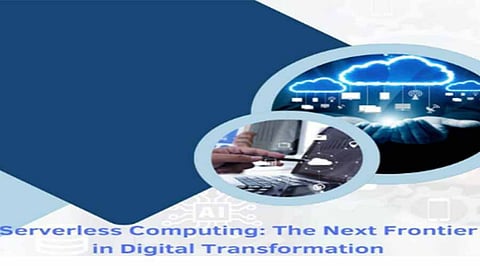

In a groundbreaking research paper published in the International Journal of Research in Computer Applications and Information Technology, Professor Venkata Raghavendra Vutti presents an exhaustive analysis on the role serverless architecture plays in accelerating digital transformation. A leading researcher in cloud computing technologies, his work illuminates the evolving landscape of modern application development.
The serverless computing revolution really starts gaining momentum, with 45% of enterprises already implementing serverless architectures in production environments and, additionally, 35% actively experimenting with these technologies. It mainly indicates a profound paradigm shift in how organizations develop applications and manage infrastructure - in effect, leaving server-centric models in favor of more flexible and scalable solutions.
Traditional deployment models for applications suffer greatly from operational issues related to resource usage. According to studies, in a traditional deployment model, the utilization of the CPU ranges from 40% to 70%. The same resources remain largely unused during idle times. According to some recent studies, the serverless architecture reduces the overheads by up to 33% than a traditional deployment in cloud and brings an enhanced level of resource utilization efficiency.
The shift from monolithic to serverless architecture marks a natural evolutionary step in the world of software development. Studies on performance illustrate that serverless architectures are well suited to supporting concurrent requests more efficiently; with scaling up and down from 0 to 1000 concurrent executions within a span of under 10 seconds, for example. This scalability benefit resulted in an overall cost savings; on average, organizations experienced 28% reductions in infrastructure costs compared to the older monolithic designs.
Serverless architectures have revolutionized how development teams approach their work, introducing fundamental changes to traditional methodologies. To accommodate platform-specific constraints like execution time limits and memory allocations, teams have developed innovative practices and workflows. The shift to stateless execution models requires developers to design applications differently, considering that functions may be terminated or redeployed across different containers at any moment. This new approach has actually led to producing more robust applications that are designed to be quite efficient and effectively handle the ever-changing nature of cloud environments.
The process of monitoring the serverless architectures is very peculiar and challenging by nature due to their distributed as well as time-bound characteristics. According to performance monitoring, the execution time differs significantly between calls, with later iterations being as low as 9-10 milliseconds, while a first-cold start might take as many as 200 milliseconds. These variations in performance sparked new, state-of-the-art monitoring applications and observability solutions that target the needs of distributed systems. These can equip teams with powerful comprehension of the behavior patterns so they can optimize performance and detect possible bottlenecks at the serverless layers.
In serverless architectures, isolation boundaries must be maintained and resource limits managed effectively to make the product secure. Modern platforms provide robust separation of function executions through containerization, making each operation a secure environment. Meanwhile, organizations need to balance cost considerations versus performance requirements because resource utilizations are directly related to both operative expenses and system efficiency. The key to optimization lies in very precise resource configuration around memory provisioning.
The serverless computing ecosystem is in a rapid phase of evolution with the introduction of new capabilities and features by platforms. Major technological advancements are in three directions: robust support for stateful applications, sophisticated resource allocation systems, and advanced monitoring tools. A particularly exciting development is the integration of edge computing with serverless architectures that transform IoT applications and real-time data processing. This convergence allows users to benefit from better edge response and data handling by the network. It further offers new possibilities to the dispersed computing applications.
The most recent trends have been towards the hybrid approaches of containerization along with serverless architectures. This solution addresses current limitations of serverless platforms for applications requiring longer execution times or specific runtime environments. Integration of container-based approaches with serverless architectures creates new possibilities for the deployment and scaling of applications.
It is driven by factors such as elimination of operational management overhead and automatic scaling of applications based on demand. The primary interest of organizations in serverless computing relates to event-driven applications and microservice architectures, resulting in more efficient and cost-effective solutions. Pay-per-use model technology means that organizations pay only for the actual compute time used, which is an economically attractive option for businesses of all sizes.
In a nutshell, Professor Venkata Raghavendra Vutti's study concludes that the complexity introduced in areas such as monitoring, testing, and state management by serverless computing offers a lot in terms of the reduced operational overhead, improved scalability, and greater development efficiency. The future of application development lies in understanding both capabilities and limitations of serverless technology, appropriate development practices, and the focus on business value throughout the transformation journey.
